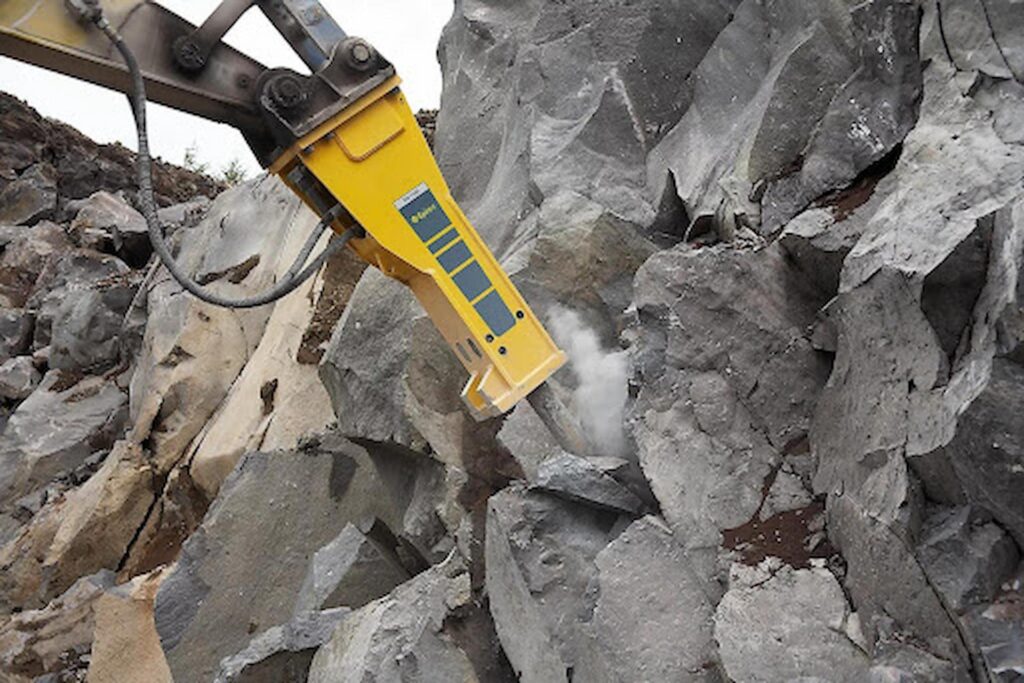Hydraulic breakers deliver immense power on construction and demolition sites—but that power demands serious respect. A single mistake can lead to equipment damage or major injuries. This guide offers practical, easy-to-apply safety rules every operator should follow to stay protected and maximise productivity through safer handling.
Hydraulic breakers are among the most powerful and commonly used tools in construction, mining, and demolition work. When paired with hydraulic excavator breakers, they deliver force capable of breaking rock, concrete, and reinforced structures with precision and speed. However, that power comes with unavoidable risks. Misuse can cause severe equipment failure, hydraulic system damage, and potentially life-threatening injuries.
Safety is not just a procedural formality—it is a skilled practice. Understanding how these machines work and following disciplined operating habits can significantly reduce hazards and boost productivity on-site.
Essential Equipment Knowledge Before Starting
Every operator must know the capabilities and limits of the breaker they are handling. A hydraulic breaker works by using pressurised hydraulic fluid from the carrier machine to drive a piston that strikes a chisel or tool bit repeatedly. This rapid impact force fractures hard materials efficiently.
Because these components operate under extremely high pressure, even small faults can create dangerous conditions. Reading the manufacturer manual fully, checking compatibility with the carrier machine, and confirming required operating pressure settings are essential steps before starting.
Never assume breakers operate the same across models. Features, pressure levels, and tool requirements vary widely.
Worksite Preparation and Hazard Awareness
Before a hydraulic breaker touches the ground, the operator should survey the work area for risks. Identify power lines, unstable ground, underground infrastructure, and other workers’ positions. The safest operations are those where hazards are anticipated rather than discovered too late.
Marking exclusion zones is essential. No one should stand near the breaker while it is working, as flying debris can travel unexpectedly far. Proper PPE must be worn: helmets, goggles, hearing protection, gloves, and steel-toe boots.
A distraction-free environment matters. Clear communication signals and radio coordination reduce confusion and prevent accidents when multiple machines are in motion.
Best Practices for Safe and Effective Operation
Operating hydraulic breakers effectively requires controlled movement rather than brute force. The goal is to allow the tool to do the work rather than applying excessive pressure, which causes overheating and stress fractures.
Key Safety Principles
- Maintain a perpendicular angle to the surface being broken to prevent tool slippage.
- Avoid applying side-loads or twisting forces, which can damage the chisel and piston.
- Do not strike continuously for long periods in the same spot—use short, controlled bursts.
- Lift the breaker immediately if there is no progress, as continued hammering can overheat oil and components.
- Never use the breaker as a lifting or prying device.
Overworking the tool not only shortens its lifespan but increases the risk of mechanical failure. Efficient handling ensures smoother operation and reduced downtime.
Routine Equipment Inspection
Consistent equipment checks are one of the simplest ways to prevent accidents. Hydraulic breakers endure heavy vibration—bolts loosen, seals wear, and hoses degrade over time.
Daily inspection should include:
- Checking hydraulic hose integrity for leaks or cracks.
- Inspecting tool retainers and bushings.
- Monitoring hydraulic temperature and fluid levels.
- Reviewing automatic lubrication system performance if fitted.
- Ensuring the chisel or tool bit is correct for the material being broken.
Research shows that well-maintained breakers can improve performance efficiency by more than 25%, reducing the likelihood of failures mid-operation. A few minutes of inspection can prevent hours of costly downtime.
Safe Shutdown and Post-Operation Care
A safe finish is just as important as a safe start. The breaker should always be lifted off the ground before shutdown so that residual pressure is relieved properly. Disconnect hydraulic lines carefully, allowing pressure to release gradually to avoid sudden bursts of fluid.
Inspecting for wear immediately after use ensures issues are detected early. Cleaning dirt and debris prevents corrosion and oil contamination, extending service life.
Secure storage away from high-traffic zones prevents accidental damage and ensures the machine is ready for the next shift.
Actionable Tips for Safer Operation
Adopting strong safety habits creates more reliable performance and a better working environment. Here are practical steps to apply consistently:
- Train every operator thoroughly before they handle machinery.
- Use the right tool bit for the material being worked on.
- Take cooling breaks to prevent overheating and seal damage.
- Stay alert to unusual sounds or vibrations, as they signal internal problems.
- Never exceed recommended hydraulic pressure levels.
Small improvements in technique can significantly improve both safety and efficiency.
Protecting People and Machinery Through Smart Operation
Accidents involving hydraulic breakers often happen because shortcuts were taken: operators ignore warning signs, bypass safety checks, or underestimate the tool’s power. Working with hydraulic excavator breakers demands discipline and respect for machinery limits. When operators prioritise safety, they protect themselves, their team, and expensive equipment investments.
Hydraulic breakers are indispensable tools that transform tough work environments. But their strength should always be matched with awareness, careful preparation, and ongoing training.
Final Thoughts
Using hydraulic breakers safely is not just about following rules—it’s about building daily habits that protect people and keep projects moving efficiently. From understanding the mechanics to preparing the site, checking equipment, and applying proper breaking techniques, every step matters. When used responsibly, hydraulic breakers help complete demanding tasks quickly and precisely, while minimising downtime and risk. Whether you operate or manage heavy equipment, make safety your highest priority and encourage your team to practise consistent safety standards when handling hydraulic excavator breakers. Strong awareness today prevents costly accidents tomorrow. Keep learning, stay cautious, and always respect the power of the tools you rely on.

